Related Research Articles

NOFX was an American punk rock band formed in Los Angeles in 1983. Bassist/lead vocalist Fat Mike, rhythm guitarist Eric Melvin and drummer Erik Sandin were original founding and longest-serving members of the band, who have appeared on every release by the band, although Sandin departed briefly in 1985, only to rejoin the following year. El Hefe joined the band in 1991 to play lead guitar and trumpet, rounding out the best-known iteration of the lineup.

American march music is march music written and/or performed in the United States. Its origins are those of European composers borrowing from the military music of the Ottoman Empire in place there from the 16th century. The American genre developed after the British model during the colonial and Revolutionary periods, then later as military ceremonials and for civilian entertainment events.

Hoagland Howard Carmichael was an American musician, composer, songwriter, actor, and lawyer. Carmichael was one of the most successful Tin Pan Alley songwriters of the 1930s, and was among the first singer-songwriters in the age of mass media to utilize new communication technologies such as television, microphones, and sound recordings.

Alkaline Trio is an American punk rock band from Chicago. The band's current members are Matt Skiba, Dan Andriano, and Atom Willard (drums).

John Leslie "Wes" Montgomery was an American jazz guitarist. Montgomery was known for his unusual technique of plucking the strings with the side of his thumb and for his extensive use of octaves, which gave him a distinctive sound.

"Anchors Aweigh" is the fight song of the United States Naval Academy and unofficial march song of the United States Navy. It was composed in 1906 by Charles A. Zimmermann with lyrics by Alfred Hart Miles. When he composed "Anchors Aweigh", Zimmermann was a lieutenant and had been bandmaster of the United States Naval Academy Band since 1887. Miles was midshipman first class at the academy, in the class of 1907, and had asked Zimmermann to assist him in composing a song for that class, to be used as a football march. Another academy midshipman, Royal Lovell, later wrote what would be adopted into the song as its third verse. Another member of the Naval Academy Band, Willy Perlitz Jr., assisting in writing the music for the different instruments used in "Anchors Aweigh".
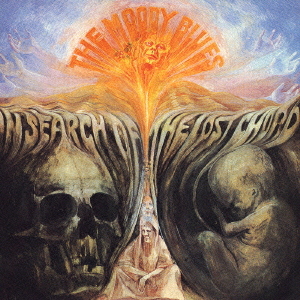
In Search of the Lost Chord is the third album by the Moody Blues, released in July 1968 on the Deram label.
"Tech Triumph" is the fight song of Virginia Tech. It was composed in 1919 by Wilfred Pete Maddux and Mattie Eppes (Boggs).
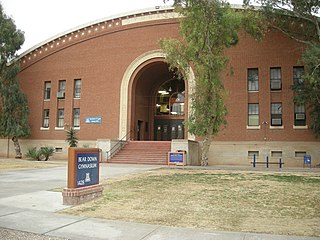
"Bear Down" is the official motto of the Arizona Wildcats, located in Tucson, Arizona. It is the inspiration for "Bear Down, Arizona!," the unofficial fight song of the University of Arizona. The official fight song is "Fight! Wildcats! Fight!" written by Douglas Holsclaw.

The Indiana Hoosiers are the intercollegiate sports teams and players of Indiana University Bloomington, named after the demonym for people from the state of Indiana. The Hoosiers participate in Division I of the National Collegiate Athletic Association (NCAA) in 24 sports and became a member of the Big Ten Conference on December 1, 1899. The school's official colors are cream and crimson.

"United we stand, divided we fall" is a phrase used in many different kinds of mottos, most often to inspire unity and collaboration. Its core concept lies in the collectivist notion that if individual members of a certain group with binding ideals – such as a union, coalition, confederation or alliance – work on their own instead of as a team, they are each doomed to fail and will all be defeated. The phrase is also often referred to with only the words "United we stand".
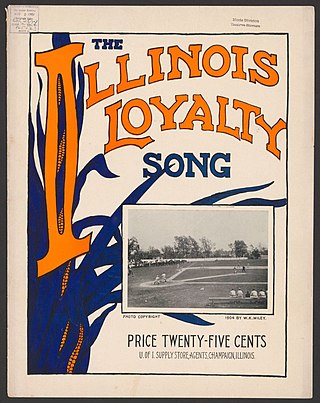
"Illinois Loyalty", also known as "We're Loyal to You, Illinois" or just "Loyalty", is a song associated with the University of Illinois Urbana-Champaign. It is the school's alma mater. It is also used as the school's fight song.

"(Back Home Again in) Indiana" is a song composed by James F. Hanley with lyrics by Ballard MacDonald that was published in January 1917. Although it is not the state song of Indiana, it is perhaps the best-known song that pays tribute to the Hoosier state.
Oskee-Wow-Wow is the official fight song of the University of Illinois at Urbana-Champaign. The song was written in 1910 by two students, Harold Vater Hill, Class of 1911 (1889–1917), credited with the music, and Howard Ruggles Green, Class of 1912 (1890–1969), credited with the lyrics.
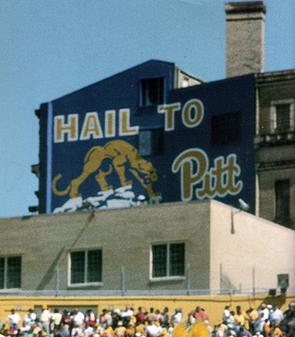
"Hail to Pitt" is the most traditional fight song of the University of Pittsburgh, which is commonly referred to as Pitt. The saying "Hail to Pitt!" is also the most traditional and commonly used slogan of the University of Pittsburgh and its athletics teams. The slogan is frequently used in promotional material, printed on merchandise and souvenirs. It was also the title of a 1982 history of Pitt athletics by author Jim O'Brien. The slogan is often used among alumni as a statement of affiliation, including as a closing signature in conversation or correspondence between alumni, and is sometime abbreviated as "HTP" or "H2P", the latter of which is a registered trademark of the university and is frequently used on official university signage and merchandise.
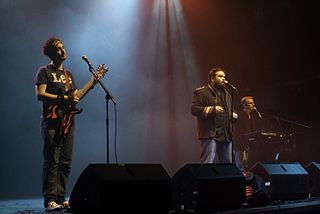
The Axis of Awesome were an Australian comedy music act with members Jordan Raskopoulos, Lee Naimo and Benny Davis, active from 2006 to 2018. The trio covered a wide variety of performance styles and performed a combination of original material and pop parodies.

Sublime with Rome is a band that began as a musical collaboration between former Sublime members Eric Wilson and Bud Gaugh, and singer and guitarist Rome Ramirez. The group's name was not only a reference to the singer's first name, but to the fact that they chiefly performed songs by the original Sublime, which was fronted by Bradley Nowell until his death in 1996.
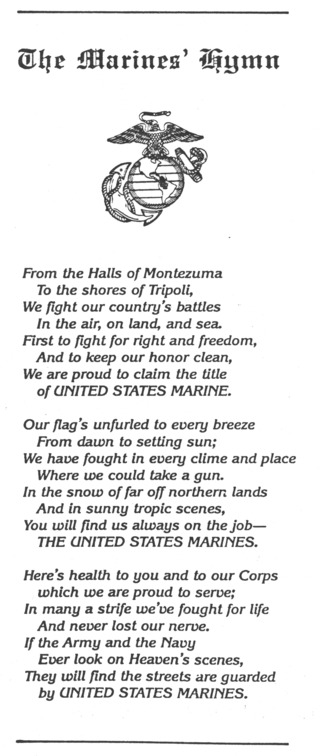
The "Marines' Hymn" is the official hymn of the United States Marine Corps, introduced by the first director of the USMC Band, Francesco Maria Scala. Its music originates from an 1867 work by Jacques Offenbach with the lyrics added by an anonymous author at an unknown time in the following years. Authorized by the Commandant of the Marine Corps in 1929, it is the oldest official song in the United States Armed Forces. The "Marines' Hymn" is typically sung at the position of attention as a gesture of respect, akin to a national anthem. However, the third verse is also used as a toast during formal events, such as the birthday ball and other ceremonies.
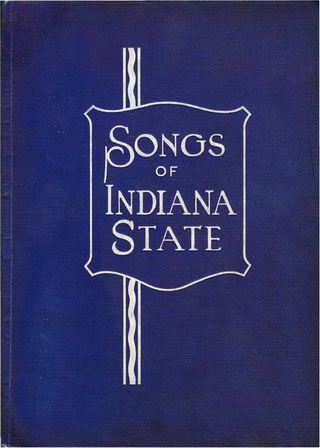
"Cheer for the Blue and White" is a fight song of Indiana State University. The words and music were written by Malcolm Scott, who also arranged "Dear Old Rose," the school song for Rose Poly. Scott was a graduate of Indiana State Teachers College earning a degree in music.

"Save It for Later" is a 1982 song written and recorded by the British ska and new wave band the Beat. The song was released as a single from the band's third and final studio album, Special Beat Service (1982), finding moderate chart success in Britain.
References
"Indiana, Our Indiana". Archived from the original on 2005-12-03. Retrieved 2006-04-27.
